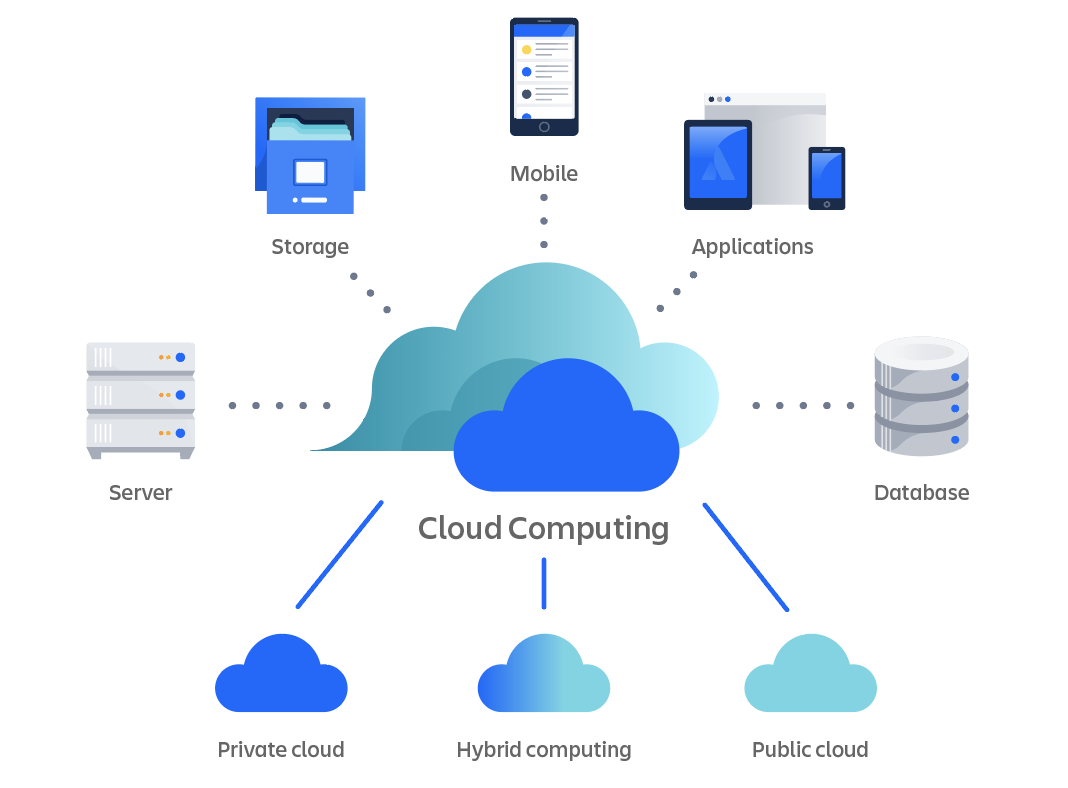Discover LinkDaddy Cloud Services for Universal Cloud Service Success: Press Release Insights
Discover LinkDaddy Cloud Services for Universal Cloud Service Success: Press Release Insights
Blog Article
Simplify Your Framework With Cloud Provider
As services browse the ever-evolving landscape of innovation and data administration, the function of cloud solutions in simplifying facilities has ended up being significantly prominent. The attraction of streamlined processes, boosted performance, and improved resource allocation via cloud options is undeniable. Nevertheless, the trip towards a much more active and economical IT infrastructure involves more than just moving to the cloud. It needs a tactical approach and a deep understanding of the subtleties of cloud adoption. So, just how can businesses effectively navigate this change and really open the potential of cloud solutions for streamlining their facilities?
Advantages of Cloud Services
Cloud services supply a structured technique to managing IT facilities, offering services with cost-efficiency, flexibility, and scalability. One of the essential benefits of cloud solutions is the scalability they use.
Furthermore, cloud solutions get rid of the need for businesses to purchase costly software and hardware. This cost-efficiency is a substantial benefit, particularly for little to medium-sized business wanting to minimize upfront costs. By making use of cloud solutions, services can access high-grade IT sources without the substantial rate tag connected with conventional facilities configurations.
Additionally, cloud services give businesses with the adaptability to access their information and applications from anywhere with an internet connection. This level of access enhances partnership amongst groups, enables remote work, and enhances general performance. The adaptability offered by cloud services equips organizations to adjust quickly to changing market conditions and client demands.
Price Cost Savings and Scalability
In enhancement to the operational advantages highlighted earlier, the combination of cloud solutions right into a business's infrastructure generates substantial cost savings and enhanced scalability. Cloud services provide a pay-as-you-go design, enabling organizations to scale sources up or down based upon present requirements, consequently staying clear of the prices linked with keeping excess ability. This adaptability makes it possible for firms to adjust promptly to fluctuating demands without sustaining unnecessary expenses.
Furthermore, cloud solutions eliminate the requirement for ahead of time financial investments in software and hardware, minimizing capital investment. Operating expenses are additionally minimized as companies no more need to manage and keep physical web servers, resulting in lower power intake and IT staffing expenses. Furthermore, cloud solutions give automated updates and upkeep, guaranteeing that the infrastructure continues to be secure and current without needing manual treatments.
Enhanced Security Actions
Carrying out rigorous safety and security steps is paramount when integrating cloud services right into a company's framework to safeguard sensitive data and guarantee compliance with sector regulations. Cloud service suppliers offer enhanced safety features such as information encryption, firewall software security, and multi-factor authentication to go to these guys mitigate cybersecurity dangers.
Moreover, regular security audits and conformity evaluations assist make sure and identify vulnerabilities adherence to sector requirements. Firms can also take advantage of features like automatic safety updates and real-time risk surveillance given by cloud company. By prioritizing safety actions and staying aggressive in attending to possible threats, businesses can confidently take advantage of cloud solutions while shielding their important information from unapproved accessibility or breaches.
Transitioning to Cloud Framework
To efficiently integrate cloud services right into a business's framework, a structured technique that deals with the shift in the direction of cloud-based options is essential. Transitioning to cloud infrastructure involves careful preparation and execution to make certain a smooth movement procedure - universal cloud Service.
When the analysis is total, a migration method ought to be developed. This approach should describe the timeline, sources, and obligations for relocating each element to the cloud. It is vital to interact this strategy clearly to all stakeholders to make sure positioning and minimize interruptions throughout the shift.
During the migration surveillance, process and testing are crucial to determine and resolve any issues immediately. Routine checkpoints must be developed to track progress and make needed modifications. Additionally, training for workers on utilizing cloud solutions ought to be offered to ensure an effective shift and maximize the advantages of the brand-new facilities.
Best Practices for Cloud Fostering
Effective fostering of cloud solutions rests on the calculated placement of service goals with technical abilities and business readiness. To guarantee a smooth change to the cloud, organizations must start by conducting a comprehensive evaluation of their present facilities and recognizing which workloads are best matched for cloud movement. It is critical to include vital stakeholders from different divisions in the decision-making process to obtain buy-in and deal with any issues beforehand.
Another best method for cloud fostering is to focus on security and compliance. Organizations needs to very carefully evaluate the safety actions used by cloud provider and guarantee that view it now their data is shielded according visit the website to industry standards and governing demands. Applying robust data file encryption, gain access to controls, and normal protection audits can help reduce risks related to cloud fostering.

Verdict

As companies browse the ever-evolving landscape of innovation and information administration, the role of cloud solutions in simplifying facilities has actually become significantly prominent - linkdaddy cloud services. Just how can organizations properly navigate this shift and truly open the potential of cloud services for streamlining their infrastructure?
Cloud services use a streamlined technique to handling IT infrastructure, giving businesses with adaptability, scalability, and cost-efficiency. By utilizing cloud services, businesses can access top notch IT resources without the substantial price tag associated with standard facilities setups.
To guarantee a smooth change to the cloud, organizations ought to start by performing a comprehensive analysis of their existing framework and identifying which work are best suited for cloud movement.
Report this page